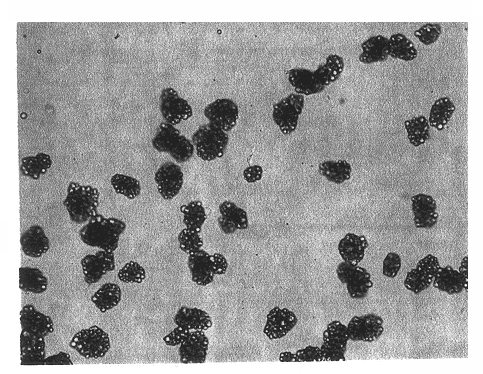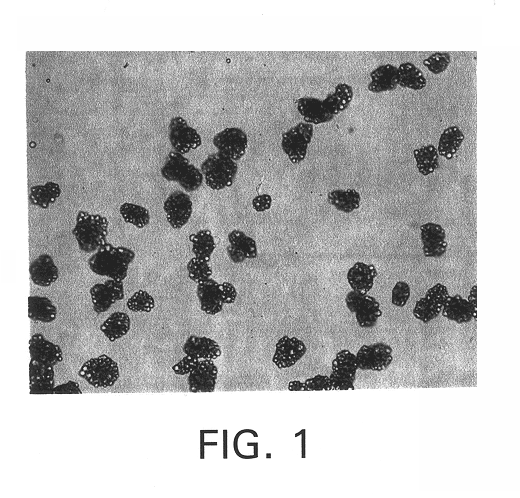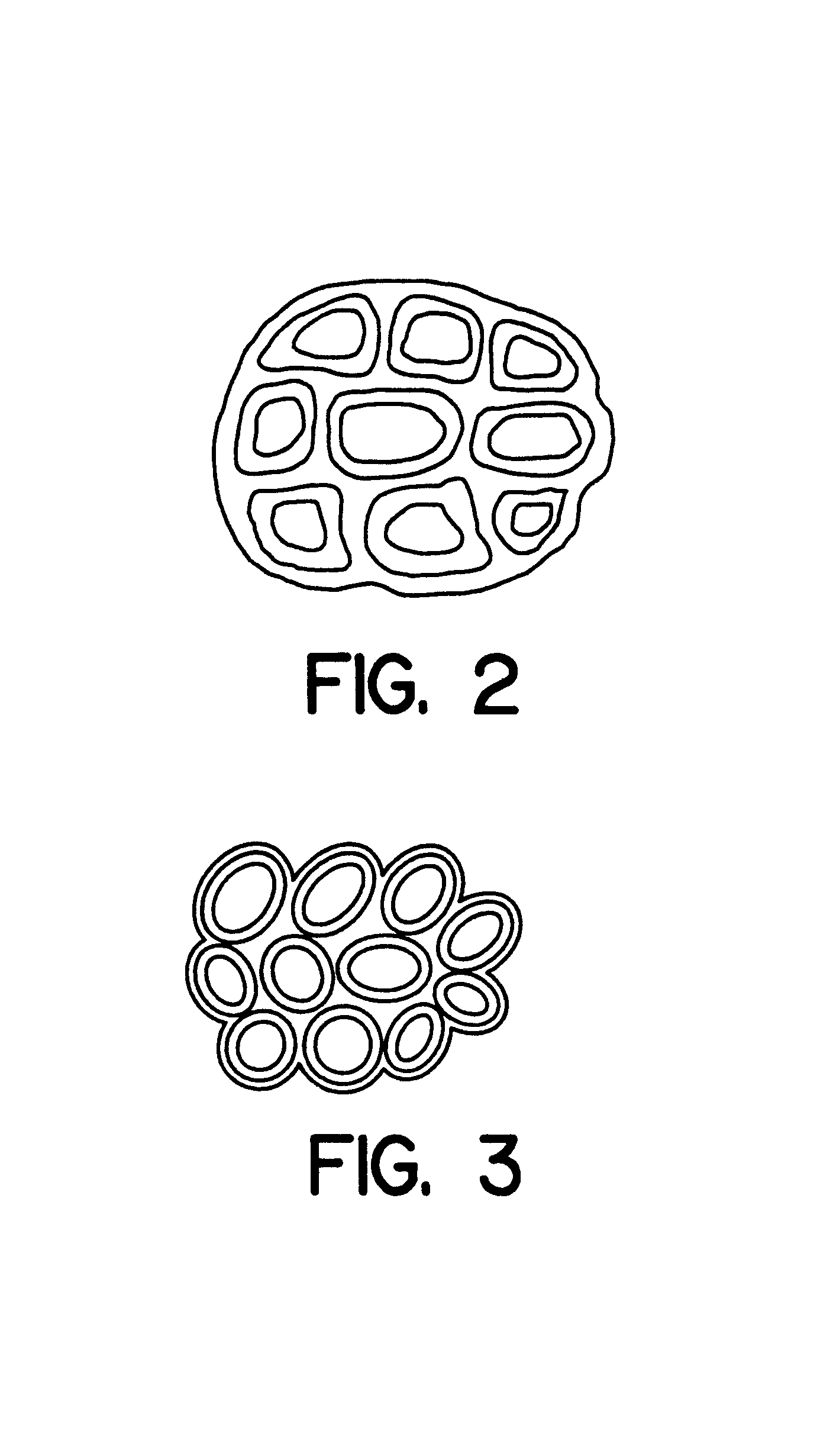Microcapsules having improved printing and efficiency
a microcapsule and printing technology, applied in the field of microcapsules, can solve the problems of ineffective rupture and activation of normal activation pressure on the sheet or web, inability to achieve the optimal balance of properties, so as to reduce the loading of microcapsules, improve image printing quality, and efficiently utilize microcapsules in paper stock
- Summary
- Abstract
- Description
- Claims
- Application Information
AI Technical Summary
Benefits of technology
Problems solved by technology
Method used
Image
Examples
examples 1-51
The following general procedure was used in an acrylic acid-alkyl acrylate process for Examples 1-51 to produce microcapsules sometimes referred to hereinafter as "aminoplast" microcapsules. Such aminoplast microcapsules can be, for example, the starting material for making the novel microcapsules and microcapsule aggregates of this invention.
Into 153 grams of a mixture of 149.5 grams of water and 3.5 grams of the acrylic acid-alkyl acrylate copolymer, adjusted to pH 5.0, were emulsified 180 grams of the intended capsule nucleus material solution of Table 2. A second mixture of 6.5 grams of the corresponding acrylic acid-alkyl acrylate copolymer and 65 grams of water was prepared and adjusted to pH 5.0 and 20 grams of a partially methylated methylol melamine resin solution ("Resimene 714", 80 percent solids, Monsanto Company, St. Louis, Mo.) was added and this mixture was in turn added with stirring to the above-described emulsion. The resulting mixture was placed in a container whi...
examples 52-57
In Examples 52-57, a series of encapsulation experiments, similar to Examples 1-51, was performed except that a different capsule shell formation process was utilized. In each of Examples 52-57, the following general procedure was used. Into a mixture of 89.5 grams of water, 5 grams of urea, 0.5 gram of resorcinol and 5 grams of an alkyl acrylate-acrylic acid copolymer, adjusted to pH 4.0, were mixed 90 grams of the intended capsule nucleus material solution of Table 2. Such mixtures were emulsified and each such resulting mixture / emulsion was placed in a container which was mounted in a room temperature water bath. Continuous stirring was provided, 13.5 grams of 37 percent formaldehyde solution were added and the bath was heated to 55 degrees C. and maintained at that temperature overnight to initiate and complete encapsulation.
The resulting capsule compositions had acceptable particle sizes and particle size distributions, and were formulated into CB sheets as previously described...
example 58
Starting with single layer aminoplast microcapsules produced according to a selected one of Examples 1-57, and starting with the mixture in the liquid medium in which such microcapsules were produced, the pH of the mixture is adjusted to 6-7 with 20 percent NaOH. The mixture is then diluted to a target percent solids of 23 percent aminoplast microcapsules.
A 7.25 percent solution of gelatin is prepared by adding dry gelatin powder to an adequate amount of water to meet the target percent solids of gelatin, then heating the solution to 55.degree. C. in a water bath while stirring. A mass of 218.5 g (grams) of the 7.25 percent gelatin solution, containing e.g. 16.4 grams of gelatin solids, is added to 1012 g of a mixture of 23 percent microcapsules, e.g. 304 grams of microcapsules, in a 55.degree. C. water bath. Thus, the gelatin represented approximately 5 weight percent of the combination of gelatin plus microcapsules.
The 55.degree. C. mixture is then adjusted to a of pH 8.9 to 9.0 w...
PUM
| Property | Measurement | Unit |
|---|---|---|
| diameters | aaaaa | aaaaa |
| diameter | aaaaa | aaaaa |
| diameter | aaaaa | aaaaa |
Abstract
Description
Claims
Application Information
 Login to View More
Login to View More - R&D
- Intellectual Property
- Life Sciences
- Materials
- Tech Scout
- Unparalleled Data Quality
- Higher Quality Content
- 60% Fewer Hallucinations
Browse by: Latest US Patents, China's latest patents, Technical Efficacy Thesaurus, Application Domain, Technology Topic, Popular Technical Reports.
© 2025 PatSnap. All rights reserved.Legal|Privacy policy|Modern Slavery Act Transparency Statement|Sitemap|About US| Contact US: help@patsnap.com



